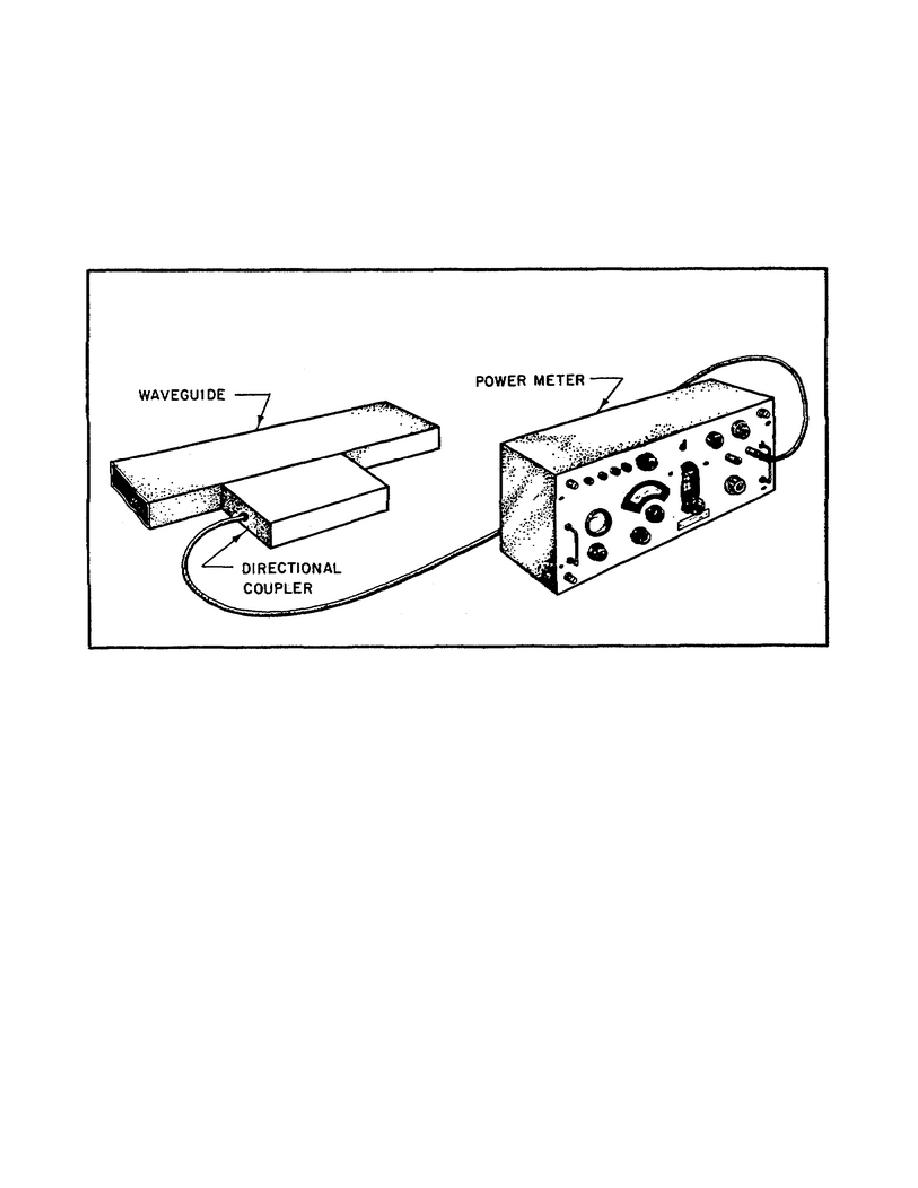
18. Coupling waveguide to test equipment.
As a repairman, it is your job to test radar equipment. Many times
you will have to make tests in the RF section of the equipment. This means
you will have to connect test equipment to waveguide. You do this with a
device called a directional coupler. A directional coupler takes a sample
of the energy from the waveguide and couples it to the test equipment. An
example of directional coupling from waveguide to a power meter is shown in
Figure 116.
Figure 116. Waveguide Connected to Meter
Through a Directional Coupler.
19. Next, coupling waveguide to a dummy load.
a. Sometimes you will have to work on equipment that is operating, but
not radiating energy.
This happens many times when military security
forbids any transmission of power. When you want your equipment to be in
full operation, but not radiating any power, you use a dummy load. A dummy
load is a device which absorbs RF energy instead of radiating it.
b. Dummy loads used for communications equipment are usually resistors,
light bulbs, or power meters. Radar sets use resistive dummy loads like the
one shown in Figure 117.
The dummy load shown is a section of waveguide
filled with mixture of sand and aquadag. All the energy traveling down the
waveguide is dissipated in the form of heat by the sand and aquadag, thus no
energy is radiated.
The outside of the waveguide has cooling fins which
help dissipate the heat.
171



 Previous Page
Previous Page
